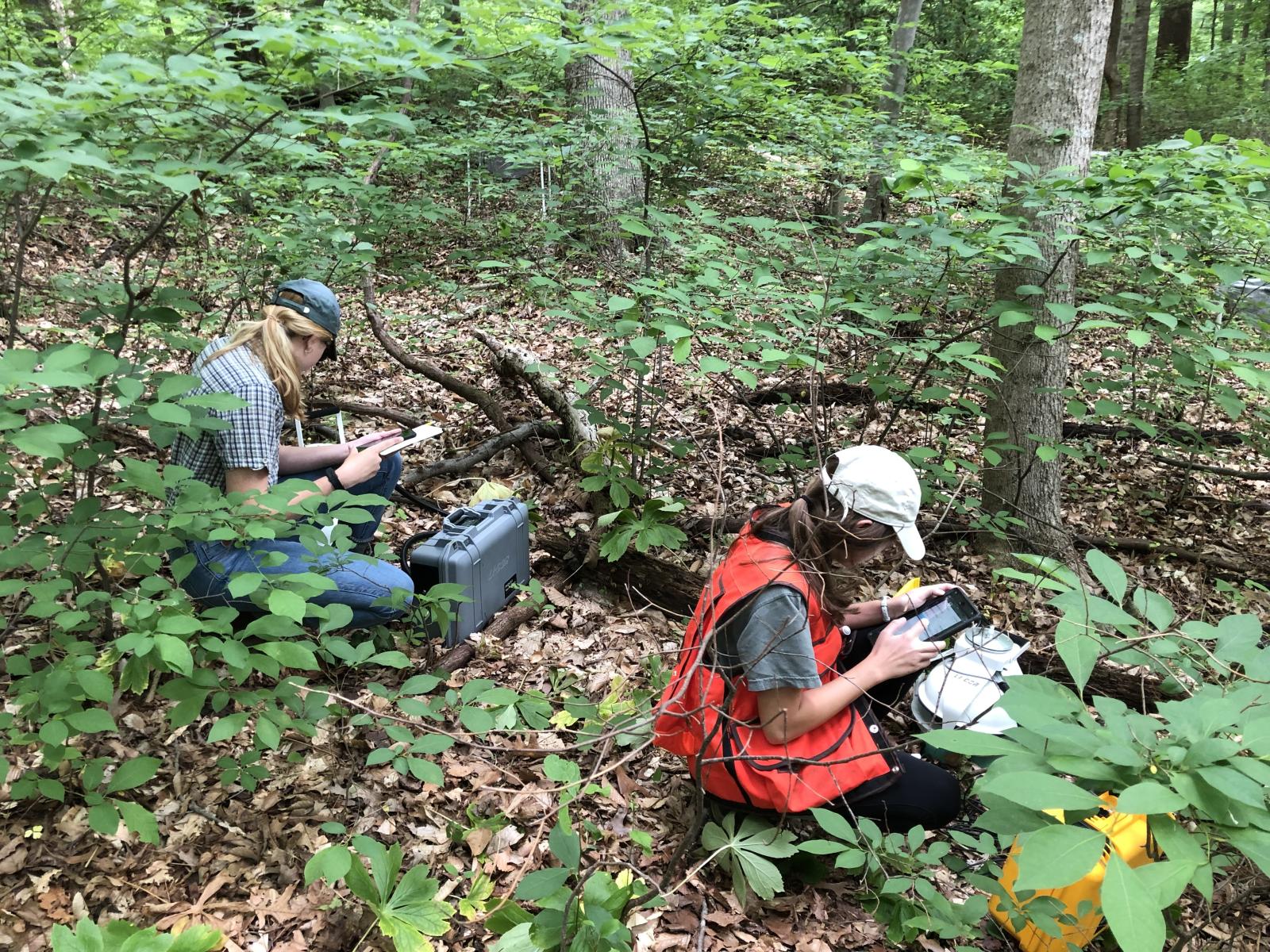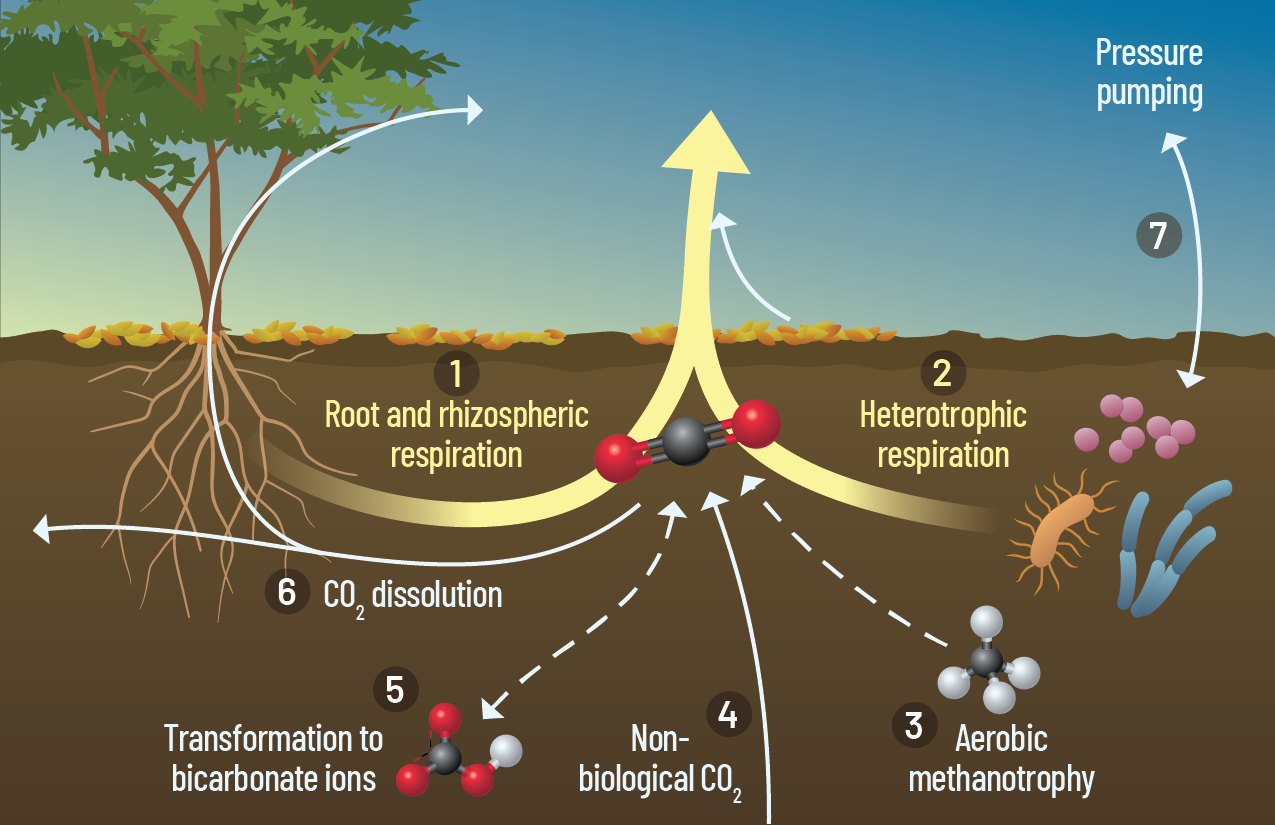Synthesizing Progress and Frontiers in Understanding Soil CO2 Losses
A sweeping study reviews decades of progress and challenges in understanding soil respiration

Technicians measure soil respiration in a forest at the Smithsonian Environmental Research Center in Maryland, near the western shore of Chesapeake Bay.
(Photo courtesy of Ben Bond-Lamberty | Pacific Northwest National Laboratory)
The Science
Soils constantly lose carbon dioxide (CO2) generated by microbes and plant roots to the atmosphere, a process termed “soil respiration.” That CO2 from soils is one of the largest flows in the global carbon cycle. This study reviewed progress in understanding this process, synthesized estimates and analyses of ecosystem- to global-scale soil respiration, analyzed the best- and least-well-understood mechanisms influenced by climate change, and discussed the most compelling challenges and opportunities for the future.
The Impact
Soils hold far more carbon than is in the atmosphere, and their stability and resilience in the face of human land use and ongoing climate change is a major uncertainty. Because the dominant pathway through which soil loses carbon is via soil respiration, it is crucial to quantify, understand, and predict this process. Significant progress has been made in understanding the underlying mechanistic process, but too often these insights are fragmented across the literature. This review paper provides a sweeping synthesis of advances, challenges, and opportunities in this field.
Summary
“Soil respiration” refers to the flow of carbon dioxide, mostly generated by plant roots and microbes, from the soil to the atmosphere. This flux is one of the largest in the earth system, and is highly uncertain. Understanding and modeling it has significant implications for our ability to predict the effects and future evolution of climate change. This review paper summarized advances, insights, and challenges in soil respiration science; laboratory approaches and findings; changes in how researchers measure and understand soil respiration in the natural world; and efforts to estimate the global dynamics of soil respiration from openly available databases of observations. We conclude by discussing the most compelling challenges and opportunities for the future.

PNNL Contacts
Ben Bond-Lamberty, bondlamberty@pnnl.gov, corresponding author
Kendalynn Morris, kendalynn.morris@pnnl.gov, COMPASS-FME author
Vanessa Bailey, vanessa.bailey@pnnl.gov, COMPASS-FME PI
Funding
The primary funder supporting this work was the NASA Terrestrial Ecology Program's “ResCom” (80NSSC21K1715) project. Co-author Dr. Kendalynn Morris was supported by COMPASS-FME, a multi-institutional project funded by the U.S. Department of Energy, Office of Science, Biological and Environmental Research program as part of the Environmental System Science Program. Pacific Northwest National Laboratory is operated for the Department of Energy by Battelle Memorial Institute under contract DE-AC05-76RL01830.
Published: April 26, 2024
Bond-Lamberty, B., Ballantyne, A., Berryman, E., Fluet-Chouinard, E., Jian, J., Morris, K. A., Rey, A., and Vargas, R.: Twenty Years of Progress, Challenges, and Opportunities in Measuring and Understanding Soil Respiration, Journal of Geophysical Research: Biogeosciences, 129, e2023JG007637, 2024.